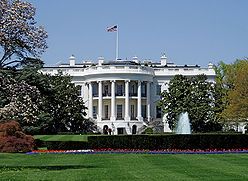
October 2014 archive
Oct 14 2014
Late Night Karaoke
Oct 14 2014
TDS/TCR (Burt Gummer)

Chimichanga
Indigenous People Day
The real news, 2 songs by Robert Plant, and next week’s guests below.
Oct 13 2014
Former AIG CEO Wants More Tax Payer Money
Poor Hank Greenberg, the ultra wealthy former CEO of American International Group (AIG), has a sad. As the largest shareholder, he thinks that SIG shareholders got a raw deal when the government saved the company with more than $180 billion in cash. He believes the bailout cost shareholders, like himself, tens of billions of dollars. Unlike the banks, the government set down rules for the loan that forced the company to pay back Wall Street firms.
The trial has a cast of characters reminiscent of the congressional bailout hearings with testimony from former chair of the Federal Reserve, former Treasury Secretaries Timothy Geitner and Henry Paulson.
Secrets of the bailout, exposed: Why you should be watching the AIG trial
By David Dayen, Salon
To this day, information on the banks’ heist and how it went down is pathetically scant. That’s about to change now
The AIG bailout trial began in Washington last week. This is a case where one ruthless, reckless corporate CEO, AIG’s former chieftain Hank Greenberg, argues that his company wasn’t treated as well during the bailout as those of other ruthless, reckless corporate CEOs. So there’s no real rooting interest for anyone with at least one foot planted in reality.
But as I wrote recently, regardless of the outcome, this trial should matter to every American. In fact, just in its first week, we’ve learned a lot of new information about how the bailout architects- then-Treasury Secretary Henry Paulson, ex-Federal Reserve chair Ben Bernanke, and former president of the New York Fed Timothy Geithner – conducted themselves amid the chaos of the financial crisis. And it doesn’t reflect well on any of them, with concealed information, bait-and-switches, and favorites played among financial institutions. As these three prepare to take the stand this week in the case, we should be pleased to finally have this debate about the bailout in public. [..]
We all know the adage that history gets written by the winners. In this case, a very rigid narrative of the bailouts took hold, featuring the swashbuckling actions of governmental leaders who made the hard choices necessary to save the financial system. But because of one ornery ex-CEO, we’re getting another draft of that history, one that displays the bailout as chaotic, selective and in many cases one where laws got thrown out the window and raw power ruled.
As the taxpaying public who fronted the money for all this activity, we should get to know the truth. And the next time the country is faced with such a situation, policy-makers should think twice before heading down the same path, mindful that their dirty laundry will eventually get aired.
POSTSCRIPT: Henry Paulson testified Monday in the trial, confirming the disparate treatment of AIG relative to banks like Citigroup, but saying that circumstances warranted it because those banks were more essential to keeping the financial system afloat. He said that the government had to treat AIG harshly to win political support. (Of course, the government didn’t treat AIG that harshly, gifting them a carryover tax benefit worth $35 billion and letting their executives take bonuses in 2009.) Paulson also acknowledged the private bid for AIG from China Investment Corporation, but asserted that they wouldn’t have followed through on the bid without a government guarantee, even though, he admitted, he never talked to the Chinese.
The best is Jon Stewart’s chastizing Breenberg for being a cry baby.
It would be funny, if it weren’t so ridiculously pathetic.
Oct 13 2014
On This Day In History September 13
Cross posted from The Stars Hollow Gazette
This is your morning Open Thread. Pour your favorite beverage and review the past and comment on the future.
Find the past “On This Day in History” here.
October 13 is the 286th day of the year (287th in leap years) in the Gregorian calendar. There are 79 days remaining until the end of the year.
On this day on 1792, the cornerstone for the White House in laid in Washington, DC.
In 1800, President John Adams became the first president to reside in the executive mansion, which soon became known as the “White House” because its white-gray Virginia freestone contrasted strikingly with the red brick of nearby buildings.
The President’s house was a major feature of Pierre (Peter) Charles L’Enfant’s’s plan for the newly established federal city, Washington, D.C. The architect of the White House was chosen in a design competition, which received nine proposals, including one submitted anonymously by Thomas Jefferson. The nation’s first president, George Washington, traveled to the site of the federal city on July 16, 1792, to make his judgment. His review is recorded as being brief, and he quickly selected the submission of James Hoban, an Irishman living in Charleston, South Carolina. Washington was not entirely pleased with the original Hoban submission, however; he found it too small, lacking ornament, and not fitting the nation’s president. On Washington’s recommendation, the house was enlarged by thirty percent; the present East Room, likely inspired by the large reception room at Mount Vernon, was added.
Construction
Construction of the White House began with the laying of the cornerstone on October 13, 1792, although there was no formal ceremony. The main residence, as well as foundations of the house, were built largely by enslaved and free African-American laborers, as well as employed Europeans. Much of the other work on the house was performed by immigrants, many not yet with citizenship. The sandstone walls were erected by Scottish immigrants, employed by Hoban, as were the high relief rose and garland decorations above the north entrance and the “fish scale” pattern beneath the pediments of the window hoods. The initial construction took place over a period of eight years, at a reported cost of $232,371.83 ($2.8 million in 2007 dollars). Although not yet completed, the White House was ready for occupancy on or circa November 1, 1800.
Shortages, including material and labor, forced alterations to the earlier plan developed by French engineer Pierre Charles L’Enfant for a “palace” that was five times larger than the house that was eventually built.] The finished structure contained only two main floors instead of the planned three, and a less costly brick served as a lining for the stone facades. When construction was finished the porous sandstone walls were coated with a mixture of lime, rice glue, casein, and lead, giving the house its familiar color and name.
As it is a famed structure in America, many replicas of the White House have been constructed.
Oct 12 2014
Anti-Capitalist Meetup: Redux On The National Question … Scotland and Kurdistan by NY Brit Expat
Two more different places do not come to mind, yet what we have been witnessing are two instances of the national question which have been in the news recently. I was originally going to write only on Scotland, but the immediacy of the catastrophe that is happening to the Kurds in Syria and the fight being waged against great odds while the world watches (and literally the Turkish army sits in its tanks watching while prevented Turkish Kurds from joining the fight in support of those fighting in Kobaně) needs to be addressed. So I decided to discuss both issues and to ask where the left stands and where it should stand on what should have been termed historically the national question and what criteria we should use to ascertain whether there is a legitimate issue that should be supported.

As we watch the power of states in the advanced capitalist world be weakened through the internationalisation of capital beyond national borders, one would think that the national question (a question arising at the end of the 19th century with the consolidation of nation states like Germany and Italy in the 1870s in the context of the consolidation of bourgeois nationalism and then the creation in the early 20th century of new nation states following the collapse of the Hapsburg and Ottoman Empires, e.g., Hungary, Greece, Czechoslovakia) would have ceased to be a relevant consideration. However, even as we sit here and watch the control over “domestic” capital weaken in state by state (this can be easily seen in the inability to control taxation of profits of MNCs), the issue of the national question still raises its head. This is not only the situation in the post-world war II period of anti-colonialist struggles (e.g., India, Algeria, Mozambique, Zimbabwe), nor the struggle against neo-colonialism and imperialism’s attempts to control the economic and political situations in other countries, but also includes the issue of the rights of nations currently in union, through historical circumstance, or forced through being conquered historically to be part of a state (e.g., The Basque, Catalonia, Scotland, Wales).
Since both questions impact significantly on the issue of anti-imperialist in theory and practice, they bring to the fore issues that the Left needs to address. Inevitably, there will be differences among the Left due to different perspectives on the both the acceptance of the right of self-determination, the issue of nation-state themselves, and how this impacts upon anti-imperialist struggles.
Oct 12 2014
Stephen Offends Bill
Adapted from Rant of the Week at The Stars Hollow Gazette
Bill O’Reilly’s Plan To Defeat Islamic State: A 25,000-Person Mercenary Force
U.S. Naval War College Professor Tells O’Reilly: “This Is A Terrible Idea, Not Just As A Practical Matter But As A Moral Matter”
Oct 12 2014
Indigenous Peoples’ Day
It always puzzled me why schools continue to teach historical myths as factual. One of the bigger myths that is taught to American school children is about the Christopher Columbus and the discovery of America. In an article at Common Dreams, author and historian William Loren Katz lays bare the real story and it isn’t pretty.
Columbus’s Nina, Pinta and Santa Maria were driven across the Atlantic by the same ill winds that from 1095 to 1272 launched nine Eruopean Crusades to capture Moslem Jerusalem. Defeated and humiliated the invaders suffered staggering human losses, left royal treasuries depleted, and convinced Christian leaders to only pay lip service to another try.
Except for Christopher Columbus. Born Christopher Colon this ambitious Genoese craved adventure, was given to religious mysticism to the point he accepted God’s personal command to free the Holy Land. He also saw God’s hand in cloud formations, splashing waves, and distant stars, and had read a religious book that convinced him the world would end in 150 years. He claimed at sea he once saw three mermaids dancing on waves, and was sure in distant lands he would meet men with tails or heads of dogs. God had chosen him specifically to see Christianity victorious “throughout the universe.” And he would follow His command to convert or destroy Moslems, Jews and other non-believers. Columbus’s earliest sea experiences were as a youth serving on Portuguese slave-trading ships along Africa’s Atlantic coast. He learned men, women and children could be captured and sold for enormous profits. With enough slaves and gold, even a lowly Columbus could finally end the infidel grip on Holy Land. [..]
Columbus’s voyage eastward to seek the riches of Asia has been called the momentous journey in history. To him it was only first step toward his larger goal. After five weeks in the Atlantic, his food supplies running low and lying to grumbling crewmen he was not a man lost at sea, Columbus stumbled on an island in the Bahamas named Guanahani. On the morning of October 12, 1492 with a crew in heavy armor bearing swords and muskets, he left the Santa Maria for the sunny shore and a military and nationalist mission. He planted Spain’s flag in the soil, took “possession of the said island for the king and queen,” and renamed it San Salvador. “With fifty men your Highness would hold them all in subjection and do with them all that you could wish,” he wrote in his Diary. The Admiral was applying the new European “doctrine of discovery” that granted its merchant adventurers the right to claim distant lands and their inhabitants. Papal bulls of the time also divided “discovered” lands between Spain and Portugal, and in 1494 the Vatican specifically drew a line dividing the Americas – and the slave trade – between these seafaring powers.
Columbus and his expedition was also a product of Spain’s painful “final solution.” Since 711 Spain’s Moslem Arab rulers shared their cultural wealth with and practiced toleration of the country’s diverse citizenry. Catholics, Jews and Moslems lived peacefully with neighbors, as Spain became a world center of books and learning.
Then Catholic King Ferdinand of Castille and Queen Isabella marshaled an army to impose Christan rule. Castillian soldiers charged into battle with the cry “Santiago Matamoros” or “Kill the Moors.” By January 1492 Christian soldiers stood poised for victory and an era of ethnic cleansing.
The article goes onto to describe how Columbus and his men were welcomed and responded with treachery. Columbus’ voyages were the opening salvo in what would become a holocaust across the North and South American continents that continued for over 300 years. It is time that we stopped celebrating this slaughter. On Monday, celebrate Indigenous People’s Day, also known as Native American Day and learn the real history of America’s discovery and about the culture of its native people.
Oct 12 2014
Unreasonable Searches and Seizures
Asset seizures fuel police spending
by Robert O’Harrow Jr., Steven Rich, Washington Post
October 11, 2014
Police agencies have used hundreds of millions of dollars taken from Americans under federal civil forfeiture law in recent years to buy guns, armored cars and electronic surveillance gear. They have also spent money on luxury vehicles, travel and a clown named Sparkles.
…
The documents offer a sweeping look at how police departments and drug task forces across the country are benefiting from laws that allow them to take cash and property without proving a crime has occurred. The law was meant to decimate drug organizations, but The Post found that it has been used as a routine source of funding for law enforcement at every level.“In tight budget periods, and even in times of budget surpluses, using asset forfeiture dollars to purchase equipment and training to stay current with the ever-changing trends in crime fighting helps serve and protect the citizens,” said Prince George’s County, Md., police spokeswoman Julie Parker.
Brad Cates, a former director of asset forfeiture programs at the Justice Department, said the spending identified by The Post suggests police are using Equitable Sharing as “a free floating slush fund.” Cates, who oversaw the program while at Justice from 1985 to 1989, said it has enabled police to sidestep the traditional budget process, in which elected leaders create law enforcement spending priorities.
“All of this is fundamentally at odds with the U.S. Constitution,” said Cates, who recently co-wrote an article calling for the program’s abolition on The Post’s editorial page. “All of this is at odds with the rights that Americans have.”
Of the nearly $2.5 billion in spending reported in the forms, 81 percent came from cash and property seizures in which no indictment was filed, according to an analysis by The Post. Owners must prove that their money or property was acquired legally in order to get it back.
I suppose it all depends on what your definition of reasonable is.


